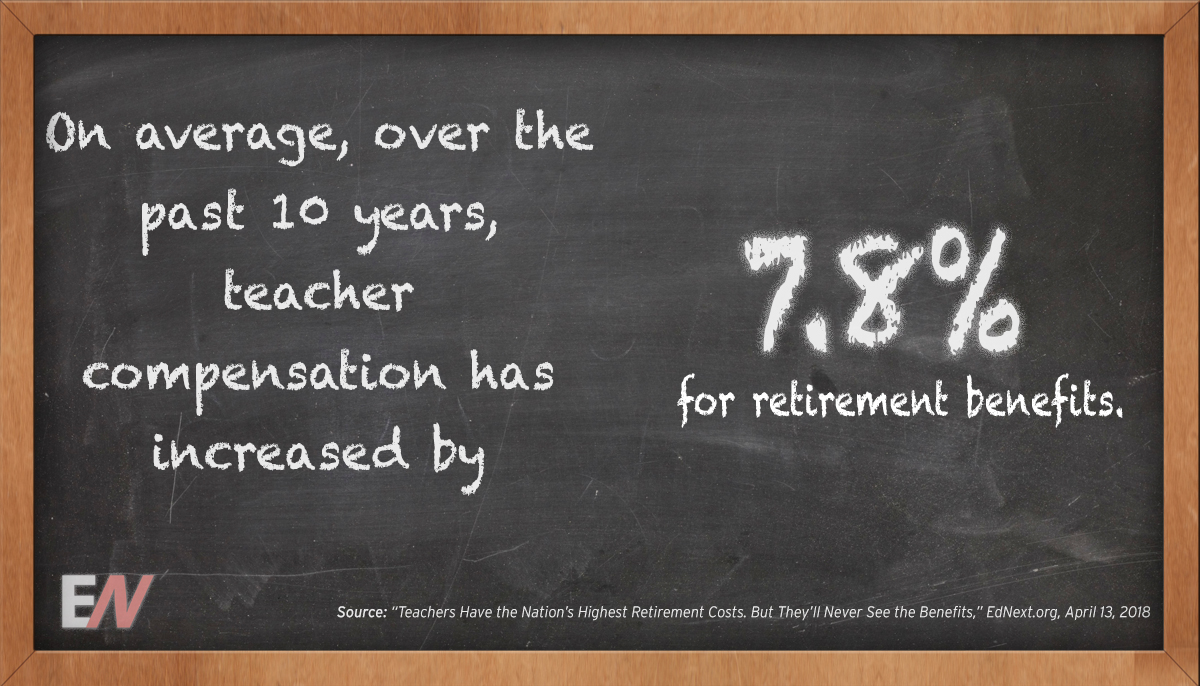
Teachers, like other workers in the American economy, are forgoing base salary increases in favor of in-kind benefits. Over the past decade, annual wages for civilians have increased by 2.3 percent, while employer health care contributions have risen by 3.2 percent and retirement costs have increased by 4.9 percent a year. Schools, by contrast, have increased their share going toward benefits even faster than other employers have. On average, over the past 10 years, teacher salaries have increased by 1.4 percent a year, compared with 4 percent increases for health insurance and 7.8 percent increases for retirement benefits. To be clear, the data reflects the employer’s cost to employ someone, not what the employee actually receives.
Unfortunately for teachers, the rising costs of their retirement systems do not reflect improved benefits; they’re primarily a function of debt. State and local budgets are not providing as much to education as they did 10 years ago, and teachers’ take-home pay is being diminished due to rising benefit costs. A recent article by Michael Podgursky, Susan Aud Pendergrass, and Kevin Hesla shows that charter schools have an opportunity to innovate in terms of retirement benefits, however. Read Chad Aldeman’s recent blog post for more information on teachers’ retirement costs, or see how teachers get a bad deal on pensions on EdNext.org.
—Education Next


